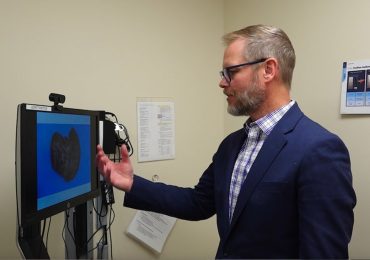
A new study from the University of Exeter highlights the association between COVID-19 transmissibility and elapsed time since infection.
The study suggests that SARS-CoV-2, the virus that causes COVID-19, may still be transmissible 10 days post-infection.1
Some studies have found that most COVID-19 infection transmission occurs within the early stages of illness, or before the onset of symptoms.2,3 However, other studies found that extended transmissibility may be observed in severe cases4 or immunocompromised individuals.5
However, this study shows this may not necessarily be the case.
Researchers used stored samples from 176 individuals that had previously tested positive on a PCR test for COVID-19 between March 17 and November 29, 2020 in the U.K.1 These individuals were not immunocompromised.
Researchers focused on measuring subgenomic RNAs (sgRNA), which are cell components that are produced by SARS-CoV-2 while it makes its viral proteins.
They looked specifically at the sgRNA derived from the SARS-CoV-2 E-gene – the envelope gene that codes for protein in the viral membrane and assists with viral assembly. As well, researchers detected the presence of the SARS-CoV-2 E-gene using sequencing.
Unlike PCR tests, the testing completed in this study gives positive results only if the person’s infection is transmissible.
PCR positivity signifies that the person has had an infection recently and does not necessarily relate to how transmissible their infection may be.
The 176 samples showed E-gene SARS-CoV-2 sequences in the genome, while 72 were E-gene sgRNA positive.
Of those cases analyzed, 74 were asymptomatic, 36 were mild (cough, headache, etc.), 22 were moderate (shortness of breath, oxygen saturation greater than or equal to 94%), 33 severe (oxygen saturation less than or equal to 94%), and 11 critical (respiratory failure).
Researchers noted that the presence of E-gene sequences of the virus was positively associated with illness severity.
There was no significant link found between E-gene derived sgRNA and illness severity.
Individuals can be sg-RNA positive for up to 68 days
Some samples tested sgRNA positive for up to 68 days. 13% of sgRNA positive cases had significant viral levels 10 days post-infection.
These findings indicate that transmissibility can extend past standard isolation periods.
Professor Lorna Harries, who oversaw the study, pointed out, “our results suggest that potentially active virus may sometimes persist beyond a 10 day period, and could pose a potential risk of onward transmission.
Furthermore, there was nothing clinically remarkable about these people, which means we wouldn’t be able to predict who they are”.6
Lead author of the study, Merlin Davies, noted that an active viral test may need to be used to “clear” individuals to return to these settings. However, more research using a larger sample needs to be completed.
References
- Davies, M. et al. (2021). Persistence of clinically relevant levels of SARS-CoV2 envelope gene subgenomic RNAs in non-immunocompromised individuals. International Journal of Infectious Diseases; 14:31. Doi: 10.1016/j.ijid.2021.12.312.
- He, X. et al. (2020). Temporal dynamics in viral shedding and transmissibility of COVID-19. Nature Medicine; 26: 672-675. Doi: /10.1038/s41591-020-0869-5.
- Lauer, L.A. (2020). The Incubation Period of Coronavirus Disease 2019 (COVID-19) From Publicly Reported Confirmed Cases: Estimation and Application. Annals of Internal Medicine. Doi: 10.7326/M20-0504.
- Van Kampen, J.J.A. et al. (2021). Duration and key determinants of infectious virus shedding in hospitalized patients with coronavirus disease-2019 (COVID-19). Nature Communications; 12: 267.
- Aydillo, T. et al. (2020). Shedding of viable SARS-CoV-2 after immunosuppressive therapy for cancer. New England Journal of Medicine; 383: 2586-2588.
- Vennells, L. (2022). One in 10 people may still be infectious for COVID after 10 days, new research indicates. EurekAlert! Accessed 13 Jan. 2022. Retrieved from https://www.eurekalert.org/news-releases/939684.
- Image by Daniel Roberts from Pixabay








